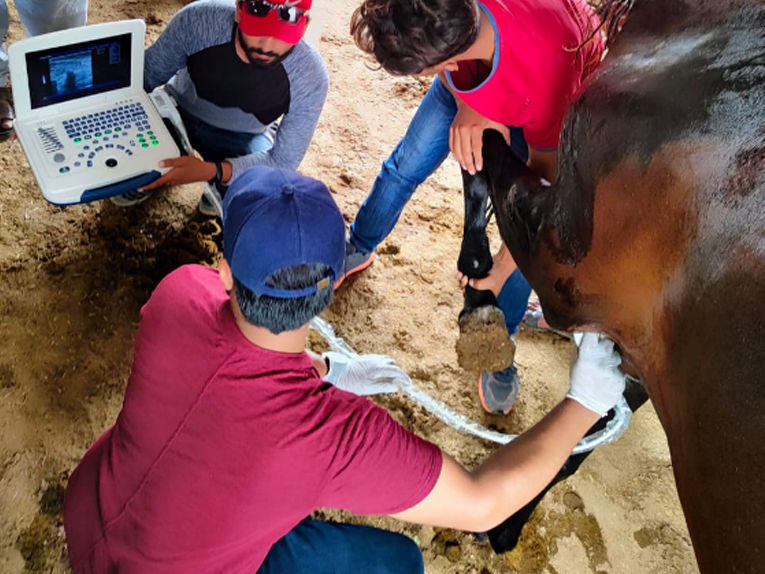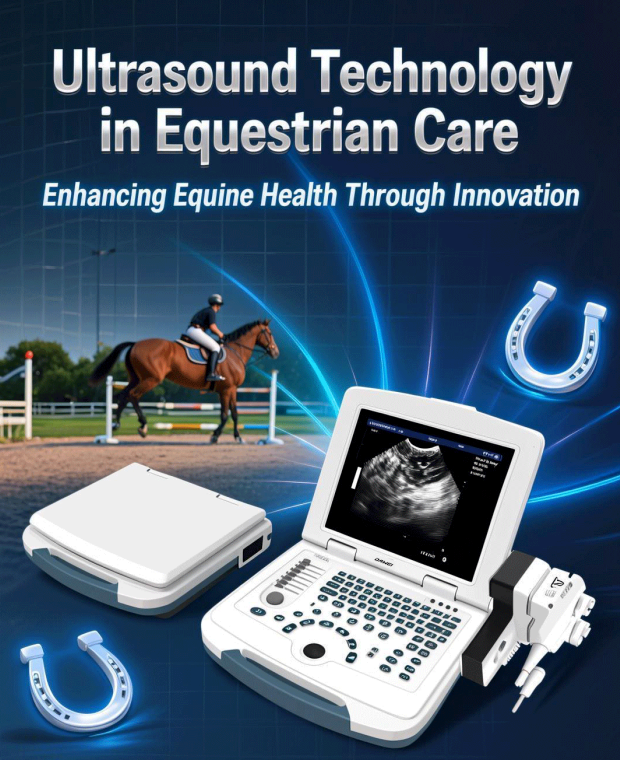Equestrian centers are vibrant hubs of activity, where the health and performance of equine athletes are paramount. From elite show jumpers to beloved therapy horses, every horse represents a significant investment of time, passion, and resources. Ensuring their optimal health and preventing injuries is not just good practice; it’s essential for their well-being and the success of the center. This is where advanced diagnostic tools, particularly high-performance veterinary ultrasound systems, play a transformative role.
Ultrasound technology provides a non-invasive, real-time window into the soft tissues, organs, and musculoskeletal structures of horses. Unlike X-rays, which are excellent for bone, ultrasound excels at visualizing tendons, ligaments, muscles, and fluid-filled structures, making it indispensable for equine practitioners.
Early Detection and Precise Diagnosis of Injuries
One of the most critical applications of high-performance ultrasound in equestrian centers is the early detection and precise diagnosis of musculoskeletal injuries. Horses, especially those in demanding disciplines, are prone to subtle lameness issues that can quickly escalate if not addressed. Ultrasound allows veterinarians to:
Identify Tendon and Ligament Lesions: Even minor strains or tears in structures like the superficial digital flexor tendon or suspensory ligament can be visualized in detail, long before they become clinically obvious. Early detection enables immediate intervention, preventing more severe, career-ending injuries.
Assess Joint Health: While X-rays show bone, ultrasound can reveal fluid accumulation, synovial thickening, and cartilage irregularities within joints, aiding in the diagnosis of conditions like synovitis or early osteoarthritis.
Evaluate Muscle Damage: Hematomas, muscle tears, and other soft tissue trauma can be accurately mapped, guiding treatment plans and rehabilitation protocols.
Monitor Healing Progress: Regular ultrasound scans provide objective data on how tissues are healing, allowing veterinarians to adjust rehabilitation programs in real-time, ensuring optimal recovery and safe return to work.
Beyond Injury: Comprehensive Health Management
The utility of high-performance ultrasound extends far beyond lameness and injury. It is a versatile tool for comprehensive equine health management:
Reproductive Health: For breeding programs, ultrasound is invaluable for monitoring mare reproductive cycles, detecting ovulation, confirming pregnancy at early stages, assessing fetal viability, and diagnosing uterine or ovarian abnormalities. This precision helps optimize breeding success and manage potential complications.
Abdominal and Thoracic Imaging: Ultrasound can be used to examine internal organs, aiding in the diagnosis of colic, liver disease, kidney issues, and certain cardiac conditions. For instance, a portable veterinary ultrasound machine can be quickly deployed to assess a colicking horse in its stall, providing immediate diagnostic information.
Pre-Purchase Examinations: A thorough ultrasound examination of key anatomical areas is a crucial component of pre-purchase exams, offering potential buyers detailed insights into a horse’s soundness and overall health status, mitigating risks.
Guided Procedures: Ultrasound guidance ensures accuracy and safety during procedures such as joint injections, nerve blocks, or abscess drainage, minimizing complications and improving outcomes.
Regional Applications: Saudi Arabia and the UAE
The importance of advanced veterinary ultrasound extends globally, with specific applications gaining prominence in regions like Saudi Arabia and the United Arab Emirates, where equine sports and camel racing are deeply ingrained in the culture and economy.
Saudi Arabia: Focus on Racing Camels and Elite Horses
In Saudi Arabia, the health and performance of racing camels and elite horses are of paramount economic and cultural importance. High-performance veterinary ultrasound systems are crucial for:
Camel Racing Health: Given the high-stakes nature of camel racing, precise musculoskeletal evaluations are essential. Ultrasound helps in diagnosing tendon and ligament injuries, muscle strains, and joint issues that can affect a camel’s racing performance. Reproductive ultrasound is also vital for breeding programs of valuable racing camels.
Equine Sports Medicine: For the country’s growing equestrian scene, including show jumping and endurance riding, advanced ultrasound facilitates detailed pre-purchase examinations, lameness diagnostics, and post-injury rehabilitation monitoring. The ability to conduct on-site examinations with a portable veterinary ultrasound machine is particularly beneficial in vast desert environments or large equestrian facilities.
United Arab Emirates: Precision for Racing Horses and Breeding Programs
The UAE is renowned for its world-class horse racing industry and prestigious breeding operations. Here, high-performance ultrasound plays a critical role in:
Thoroughbred Racing Health: The intense demands on racing thoroughbreds necessitate meticulous health monitoring. Ultrasound is extensively used for early detection of subtle lameness, assessment of tendon and ligament integrity post-race, and guiding regenerative therapies.
Equine Reproduction and Stud Farms: In high-value breeding programs, ultrasound is indispensable for precise mare reproductive management, including follicular monitoring, early pregnancy detection, and fetal health assessments. This ensures optimal breeding outcomes and safeguards genetic investments.
Performance Optimization: Regular ultrasound screenings help identify potential issues before they impact performance, allowing for proactive interventions and tailored training adjustments.
Benefits for Equestrian Centers
Investing in a high-performance veterinary ultrasound system brings numerous benefits to equestrian centers:
Enhanced Horse Welfare: Early and accurate diagnosis leads to more effective treatment and better long-term outcomes for the horses.
Reduced Downtime: Faster diagnosis and tailored rehabilitation protocols mean horses can return to training and competition sooner, minimizing financial losses and maintaining competitive edge.
Improved Reputation: Centers equipped with advanced diagnostic capabilities attract more clients and veterinarians, solidifying their reputation as leaders in equine care.
Cost-Effectiveness: While an initial investment, ultrasound can prevent costly, prolonged treatments or irreversible damage, ultimately saving money in the long run.
On-Site Convenience: With a portable veterinary ultrasound machine, examinations can be performed directly in the stable, reducing stress on the horse and logistical challenges for the owner.
The Dawei MU10: A Solution for Modern Equine Practice
To meet the demanding needs of equestrian centers and veterinary professionals, advanced systems like the Dawei MU10 Veterinary Ultrasound System offer robust capabilities. The MU10 is designed to provide high-quality imaging and comprehensive diagnostic features, making it an excellent choice for detailed equine examinations. Its versatility and user-friendly design ensure that veterinarians can conduct thorough assessments efficiently, supporting both routine health checks and critical injury evaluations.
Post time: Jul-15-2025





